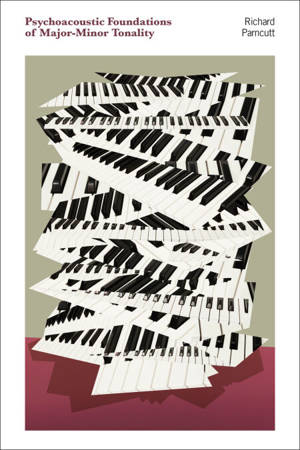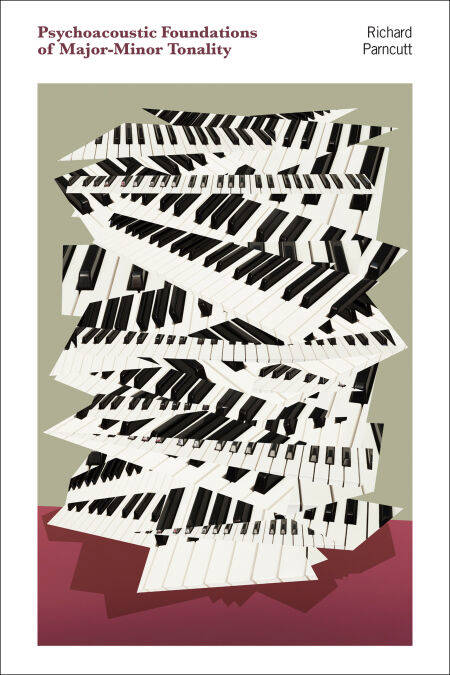
- Afhalen na 1 uur in een winkel met voorraad
- Gratis thuislevering in België vanaf € 30
- Ruim aanbod met 7 miljoen producten
- Afhalen na 1 uur in een winkel met voorraad
- Gratis thuislevering in België vanaf € 30
- Ruim aanbod met 7 miljoen producten
Zoeken
€ 64,07
+ 64 punten
Omschrijving
A fascinating interdisciplinary approach to how everyday Western music works, and why the tones, melodies, and chords combine as they do.
Despite the cultural diversity of our globalized world, most Western music is still structured around major and minor scales and chords. Countless thinkers and scientists of the past have struggled to explain the nature and origin of musical structures. In Psychoacoustic Foundations of Major-Minor Tonality, music psychologist Richard Parncutt offers a fresh take, combining music theory—Rameau’s fundamental bass, Riemann’s harmonic function, Schenker’s hierarchic analysis, Forte’s pitch-class set theory—with psychology—Bregman’s auditory scene, Terhardt’s virtual pitch, Krumhansl’s tonal hierarchy. Drawing on statistical analyses of notated music corpora, Parncutt charts a middle path between cultural relativism and scientific positivism to bring music theory into meaningful discourse with empirical research.
Our musical subjectivity, Parncutt explains, depends on our past musical experience and hence on music history and its social contexts. It also depends on physical sound properties, as investigated in psychoacoustics with auditory experiments and mathematical models. Parncutt’s evidence-based theory of major-minor tonality draws on his interdisciplinary background to present a theory that is comprehensive, creative, and critical. Examining concepts of interval, consonance, chord root, leading tone, harmonic progression, and modulation, he asks:
Why are some scale tones and chord progressions more common than others? What aspects of major-minor tonality are based on human biology or general perceptual principles? What aspects are culturally arbitrary? And what about colonial history?
Original and provocative, Psychoacoustic Foundations of Major-Minor Tonality promises to become a foundational text in both music theory and music cognition.
Despite the cultural diversity of our globalized world, most Western music is still structured around major and minor scales and chords. Countless thinkers and scientists of the past have struggled to explain the nature and origin of musical structures. In Psychoacoustic Foundations of Major-Minor Tonality, music psychologist Richard Parncutt offers a fresh take, combining music theory—Rameau’s fundamental bass, Riemann’s harmonic function, Schenker’s hierarchic analysis, Forte’s pitch-class set theory—with psychology—Bregman’s auditory scene, Terhardt’s virtual pitch, Krumhansl’s tonal hierarchy. Drawing on statistical analyses of notated music corpora, Parncutt charts a middle path between cultural relativism and scientific positivism to bring music theory into meaningful discourse with empirical research.
Our musical subjectivity, Parncutt explains, depends on our past musical experience and hence on music history and its social contexts. It also depends on physical sound properties, as investigated in psychoacoustics with auditory experiments and mathematical models. Parncutt’s evidence-based theory of major-minor tonality draws on his interdisciplinary background to present a theory that is comprehensive, creative, and critical. Examining concepts of interval, consonance, chord root, leading tone, harmonic progression, and modulation, he asks:
Why are some scale tones and chord progressions more common than others? What aspects of major-minor tonality are based on human biology or general perceptual principles? What aspects are culturally arbitrary? And what about colonial history?
Original and provocative, Psychoacoustic Foundations of Major-Minor Tonality promises to become a foundational text in both music theory and music cognition.
Specificaties
Betrokkenen
- Auteur(s):
- Uitgeverij:
Inhoud
- Aantal bladzijden:
- 472
- Taal:
- Engels
Eigenschappen
- Productcode (EAN):
- 9780262377379
- Verschijningsdatum:
- 12/02/2024
- Uitvoering:
- E-book
- Beveiligd met:
- Adobe DRM
- Formaat:
- ePub

Alleen bij Standaard Boekhandel
+ 64 punten op je klantenkaart van Standaard Boekhandel
Beoordelingen
We publiceren alleen reviews die voldoen aan de voorwaarden voor reviews. Bekijk onze voorwaarden voor reviews.











